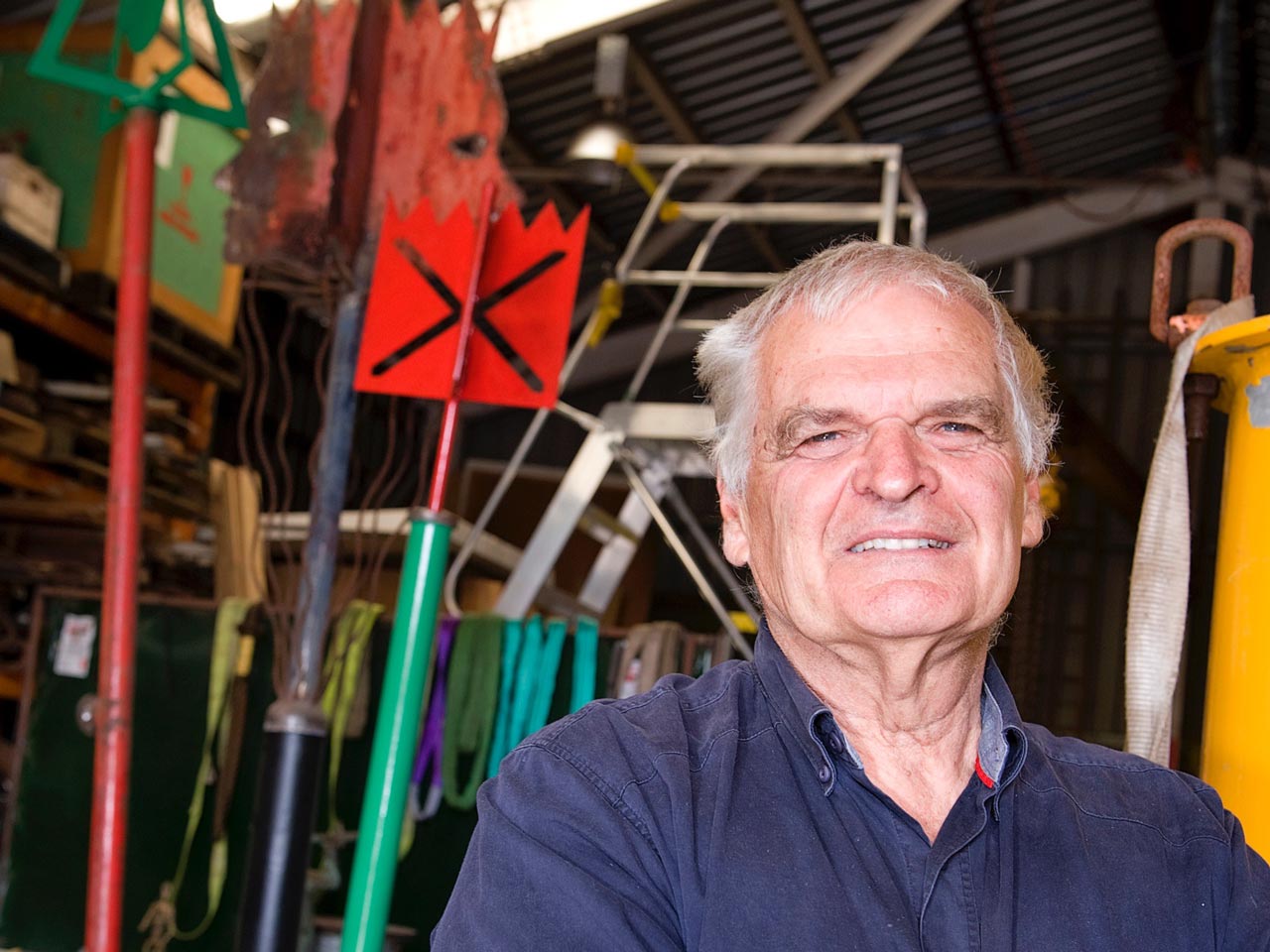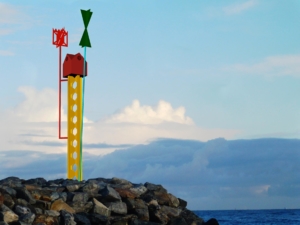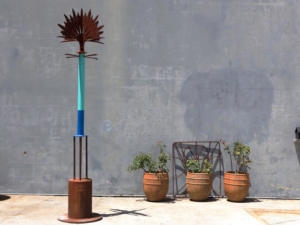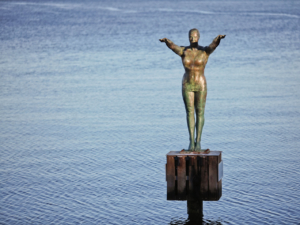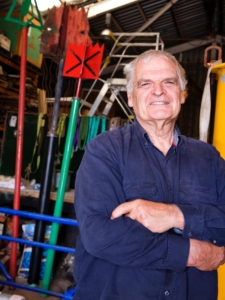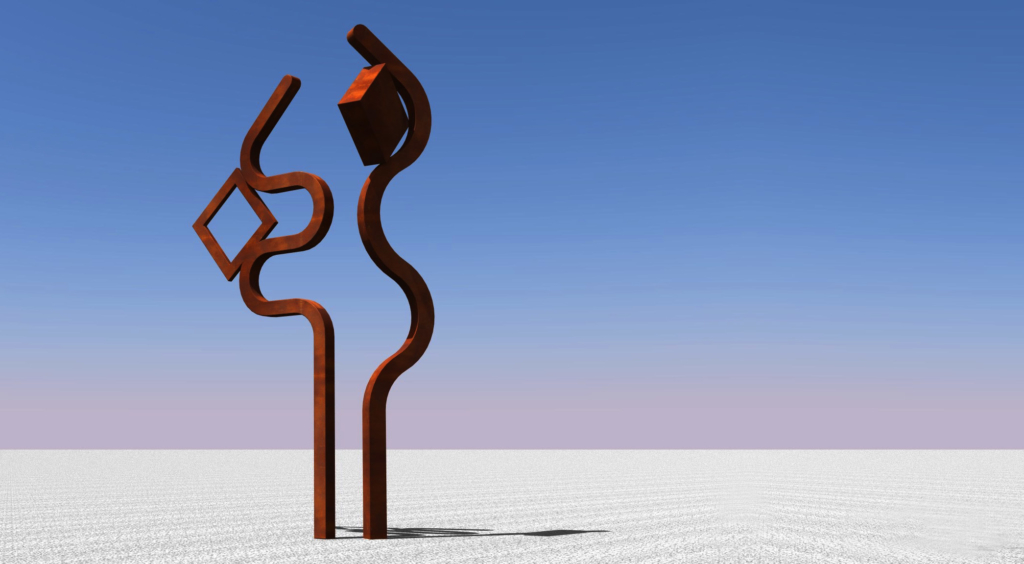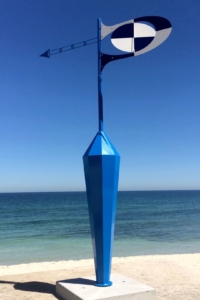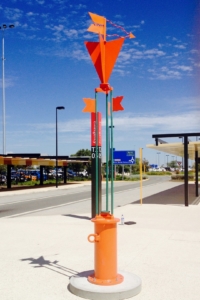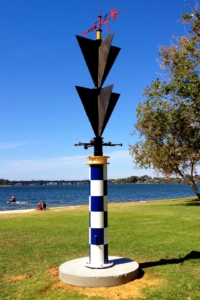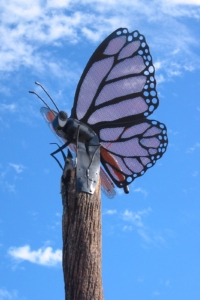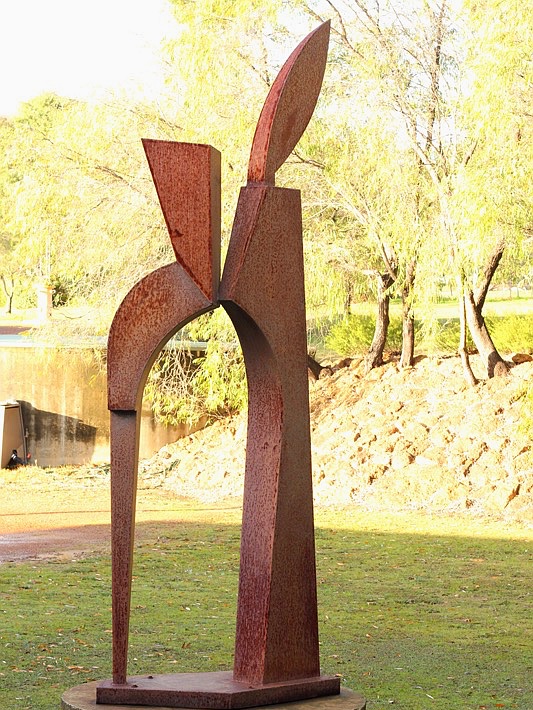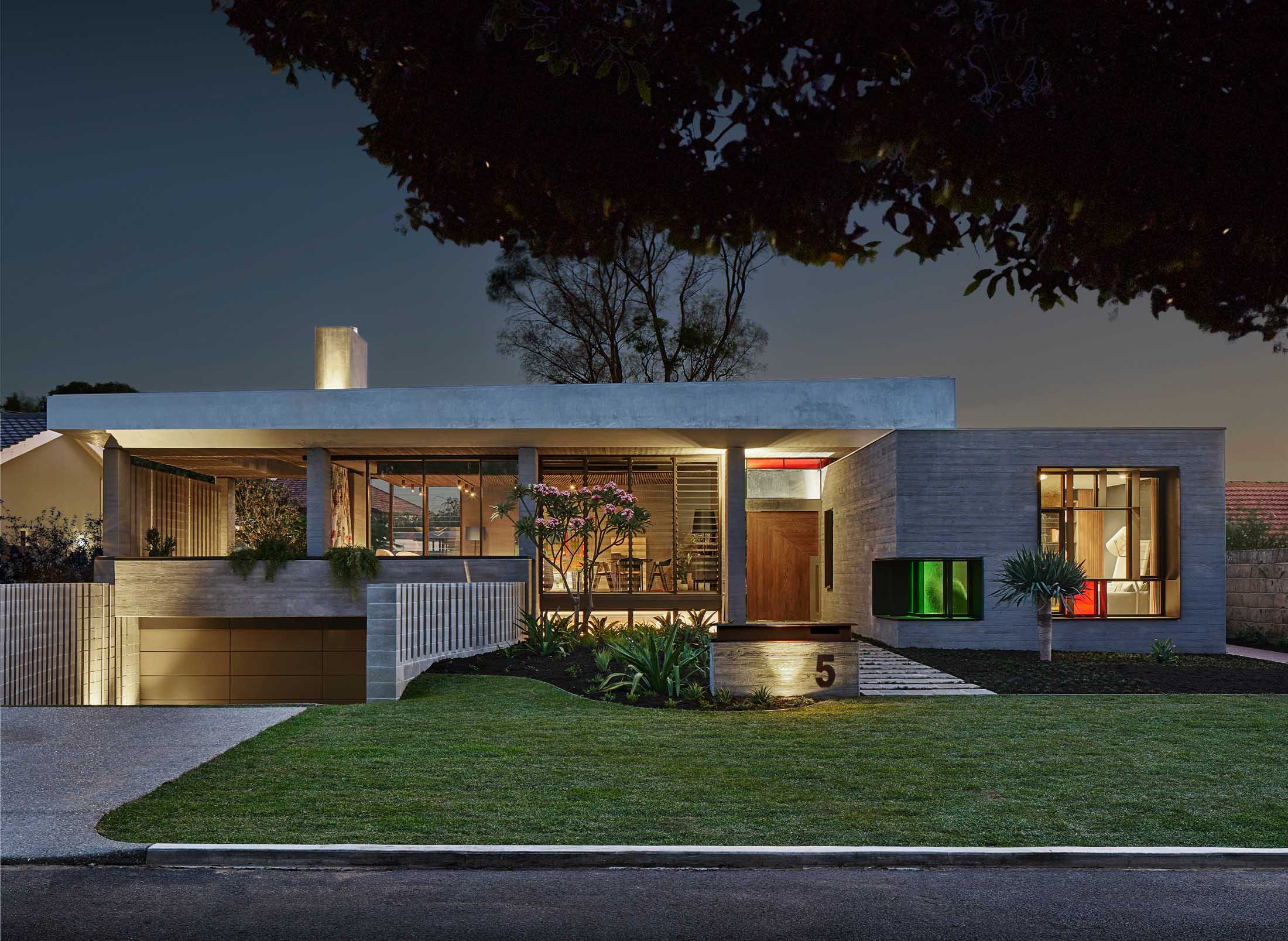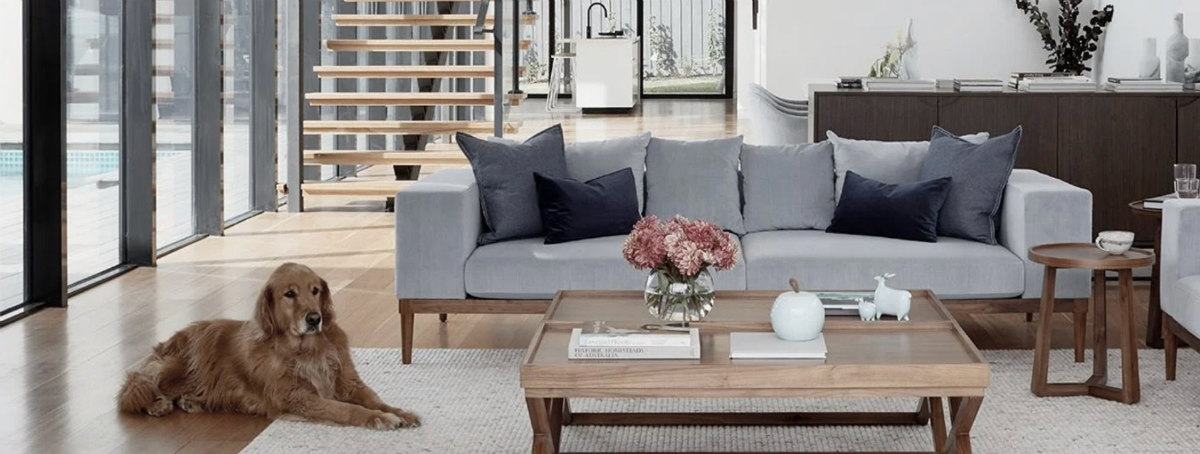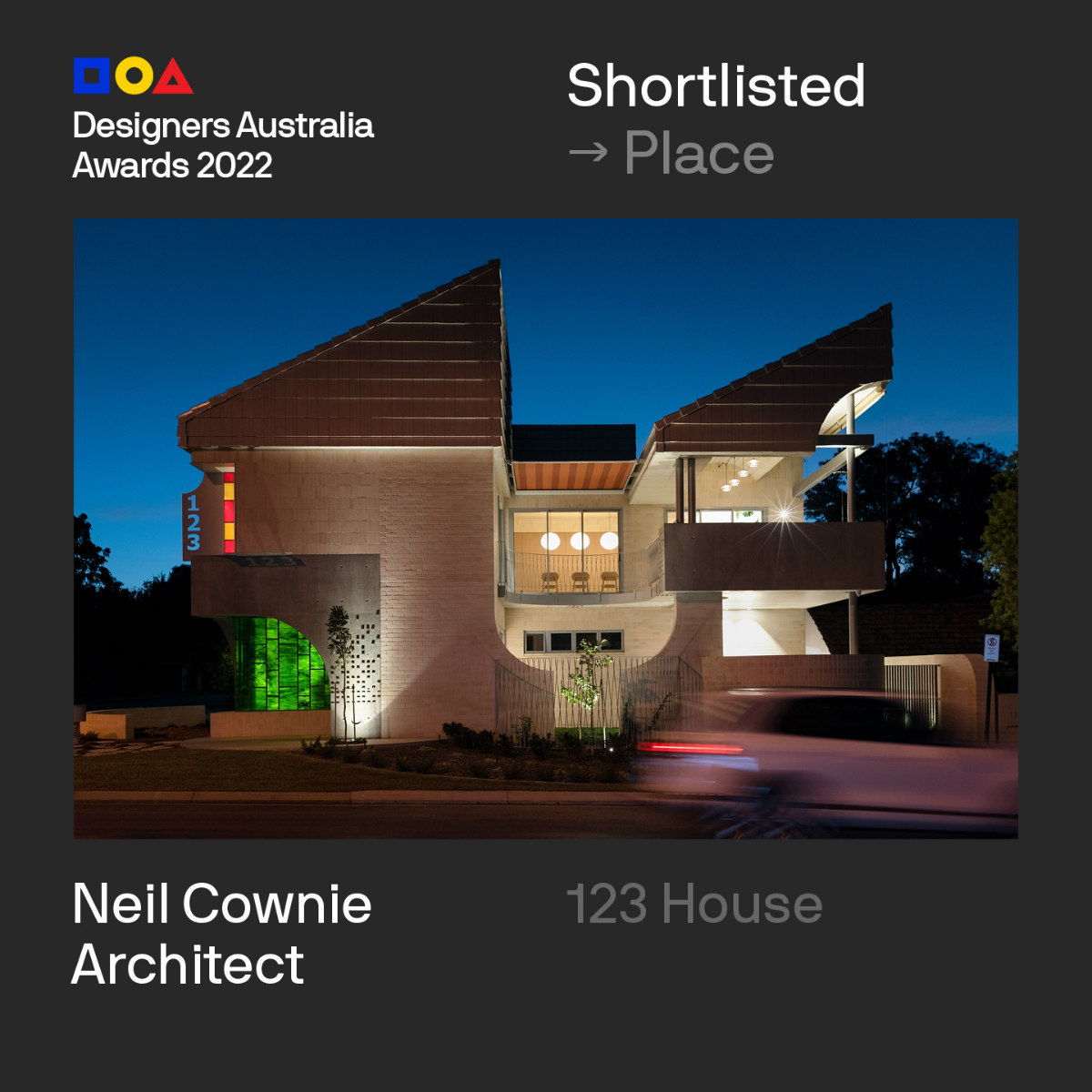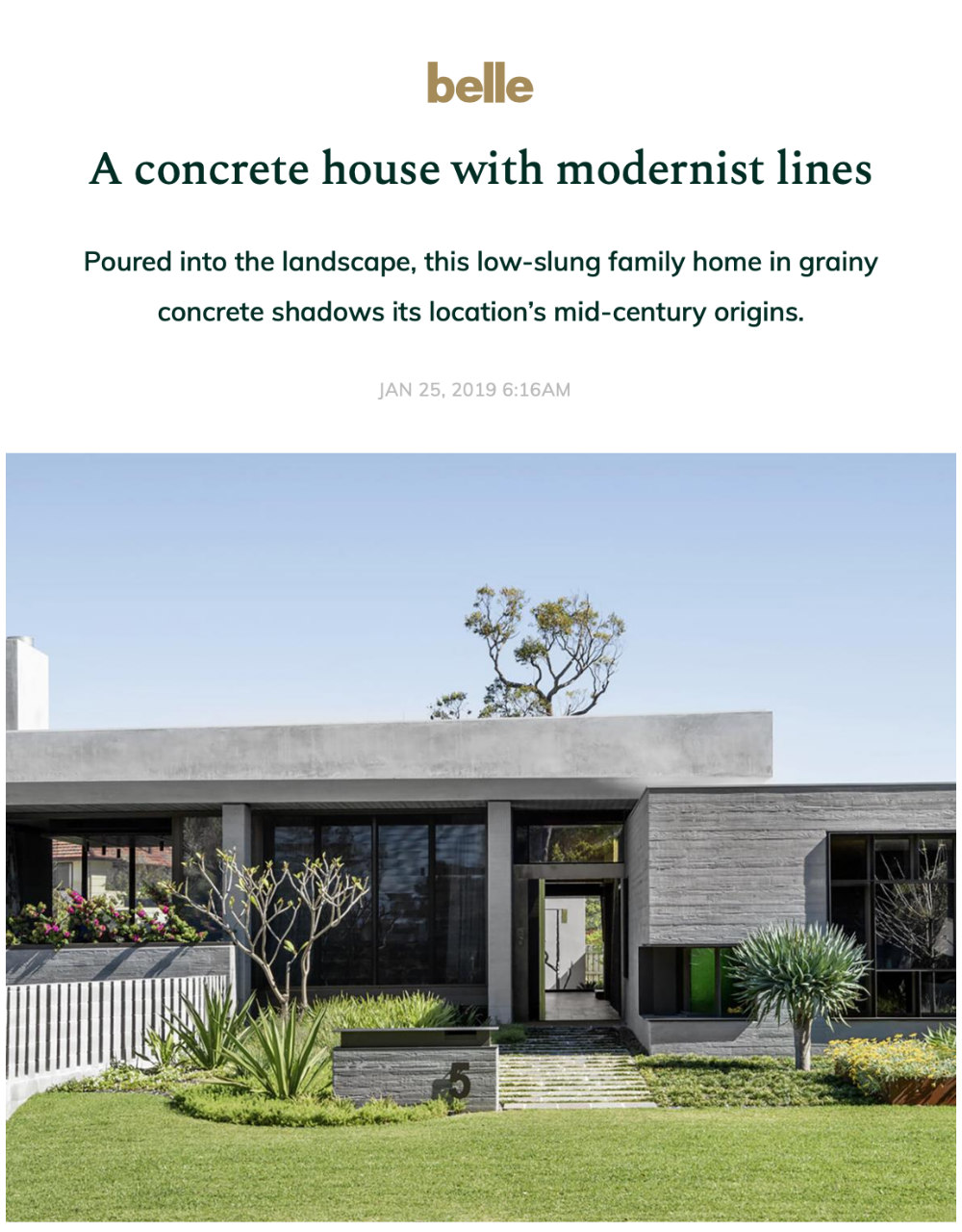Tony Jones is a well known Western Australian sculptor, teacher and arts advocate. Along with a team of volunteers, Tony has organised the Sculpture at Bathers exhibitions to celebrate the work of West Australian sculptors. In this interview he talks about how his career has developed, major influences and being part of early design discussions for residential works.
- Lighthouse, Tony Jones
- Witness 1, Tony Jones
- Eliza, Tony Jones
The Beginning
When did sculpture come into your life?
As a family, we lived on the river at Chidley Point in Mosman Park. I had a very enthusiastic Mum who encouraged us. I recall at primary school one of the happiest things was doing art. I can remember a primary school teacher saying tome that what I was doing was pretty special. I thought, that’ll do, I’m happy, tell Mum!
My interest in art developed through high school and teachers’ college. I had two good teachers, a guy called Bryant McDiven and another person called John Fawcett. They were very encouraging. They saw to it that I got a high school teaching job and then I started studying at W.A.I.T. and Perth Tech.
I ended up getting an associate-ship in art teaching. It was a degree equivalent course. I had started out wanting to be a painter but the painting side of things wasn’t working for me in that course. The sculptors who taught there created a more positive experience so I gravitated towards sculpture. That was just a fortuitous fork in the road. I haven’t forgotten about painting and I still draw a lot and can push colour around a bit with pastels and water colour.
The Studio
How would you describe your workspace to people who haven’t seen it?
It’s a very busy studio. It’s an industrial workshop. There’s no real concessions to major comfort. We’ve got a good coffee machine but I can’t use it. No, it’s a purpose-built studio, as it turns out. We built this site here, so it’s a resource. It’s got all the necessary bits of equipment. I have spent a lot of money on everything from forklifts to gantries to substantial toolboxes.
I don’t skimp when it comes to having good equipment and I suppose the lucky thing, we’ve got an overstocked yard at the moment of sculptures. You need a yard space to keep work. I enjoy coming here after many years of being committed to teaching.
It’s been good to just come here as a habit. There’s a lot of theories about how artists work, but one of them is just doing the work. You just have to do it. It’s not like you can’t feel like it on the day. You have to get up and go to the studio. Usually you cheer up after a while if you’re feeling a bit low or something like that.
Once you’re working the studio becomes a space for things to happen. By having all the pieces around me, previous works that still live with me. They motivate meor they trigger my memory. They make sure there’s always something to refer to, to keep on with. You don’t always have a breakthrough every day. If you’re doing something, you’re more likely to have a breakthrough than if you stay at home and watch TV.
Love of Sculpture
What do you love about sculpture?
I think the physicality of it, the scale of it, the way it occupies space when you’ve completed it, the way you have to engage with it. I’ve lately been liking a little bit of animation in the works, some movement, some kinetics to bring them to life so they’re not so static. They respond to the wind and the environment. Some of them are colourful, some of them are not, some of them fade, grow old like us. There’s all that possibility.
You wouldn’t want to push it too far, but they become extensions of yourself in a way. When I finally am carried out of here. People will have to come to terms with who I was through the sculpture. That’s the way it’ll work.
Have there been career highlights or the projects that have meant a lot to you?
The bottom line is being able to make something new all the time. It’s a bit like having children, I suppose. They are all important. When it comes to sculpture some live in your memory for longer than others. There was a work the other day that was installed in the Marriott hotel in Sydney, a new hotel, and I thought someone was kidding me. I thought, “That’s not my work, it’s someone who did work like mine.” My daughter sent mean image on Instagram. It actually turned out to be mine. It was bought from an exhibition in about 1998 and it is owned by Art Bank. Art Bank had leased it to the Marriott Hotel and it looked great. I was quite proud of it.
I think there are works out there that almost, without a doubt, don’t have documentation on them. They’ve got a life of their own in a way. There’s probably quite a few works like that.C.Y. O’Connor Sculpture I suppose the types of work that I’m most proud of would be some of the public artworks. One that stands out most of all is the sculpture of C.Y. O’Connor down at North Coogee. He was the engineer best known for his work on the construction of Fremantle Harbour and The Mundaring to Kalgoorlie pipeline. He’s (the sculpture) is well-received and people seem to respond really well to it. It’s been well-regarded in the press.
The piece has been adopted by C.Y. O’Connor’s family. They have a ceremony there every year on his birthday. The whole family, up to 50 people go down there and float flowers out to it and swim out.
- Float, Tony Jones
- Marker, Tony Jones
- Sculpture K, Tony Jones
- Monarch, Tony Jones
Major Influences
What were the major influences on you and your career as a sculptor?
I think history of sculpture in Australia probably started somewhere around 1970. I came back to the city five years after going to Collie as the art teacher. That was around the time interest in sculpture started to build. Prior to that I was given a prize book back in the mid 1960’s. Herbert Read’s “Concise History of Modern Sculpture”. I think that was quite important, that book.
At Claremont School of Art there were all these periodicals that came for me because I was teaching there. Art Scribe and Art Monthly. They had all the contemporary heroes of British sculpture. Tony Cragg, Antony Gormley, Richard Deacon, Anish Kapoor and a whole raft of them were just beginning their careers. We were seeing black and white pictures of their work.
It is actually hard to keep up with it these days. There has been explosive growth in the number of people creating sculpture. I got a lot from being at the Claremont School of Art and having good students. Stuart Elliott and John Tarry are two I think of. Another person that I loved, who I was fortunate to have as a student, was a guy called Akio Makigawa. He was a Japanese sculptor who went onto work in Melbourne. Akio died twenty years ago now. The quality of those students and their success through their own endeavours, commitment, just made me believe in what we were doing was as good as anything else you could do.
Commissioning For Residential Projects
You’ve been approached by Neil Cownie to discuss ideas for a sculpture for the Marina House in Mandurah. Are you usually involved this early in a project?
No, it doesn’t happen very often. I like the idea of it. Getting to sit around with other people and scratch a few lines on a piece of paper to come up with an idea that can work for a client, that fits with your way of working, is always exciting and a privilege. It doesn’t happen a lot.
There’s probably more works in homes than I can remember but none of them were part of the design process. I really enjoy meeting people and talking to them so involvement at this level is something I’d like to see more of. Something like that lifts your spirit and gives you a more positive view of the world. It is an opportunity that I appreciate.
What do you think people get from having a sculpture in their home?
I’ve got a yard full of sculpture at home. I’ve got lots of sculpture here at the studio. I think it animates the space in which people place it. I think art is an unnecessary extra for most people. It’s a discretionary thing, you either do or you don’t, but sometimes it’s a marker for their cultural awareness. It demonstrates their love of art objects.
We’ve always collected art. We’ve got more art than we know what todo with at home. I think when you have art in your home, your environment, it’s like a presence. It’s just there and your eyes scan it and you take it in. One of the things I notice, if there’s good relationship between the artist and the client or the patron is that the works connect you to the person who made them.
We have works by Stuart Elliott, Jon Tarry, Akio Makigawa, Cecile Williams and Angela McHarrie. These works trigger memories. Sometimes you remember when you bought the work or why you bought it. Was it a celebration or was it a commitment? I’ve had people tell me they bought one of my sculptures for their wedding anniversary every year. Sometimes people just see themselves as patrons. They like to support artists, that’s another thing, and there’s a kind of positive bit of karma in that.

